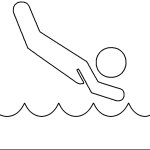Speech or Language Impairment
Overview
A speech or language impairment (SL) is
a communication disorder, such as stuttering, impaired articulation, a language impairment, or a voice impairment, that adversely affects a child’s educational performance (IDEA).
Nineteen percent of students qualifying for services under the IDEA have an SL designation (National Center for Education Statistics, 2022).
Many young children experience speech or language impairment, the second most prevalent type of disability among school-aged children and one that affects a child’s ability to communicate clearly. Early intervention can minimize, if not mitigate, many of the issues that students with SL face.
Communication disorders include the following:
- Aphasia, “a language disorder that results from damage to portions of the brain that are responsible for language.”
- Apraxia, “a speech disorder in which a person has trouble saying what he or she wants to say correctly and consistently.”
- Auditory processing disorder, “a term used to describe what happens when your brain recognizes and interprets the sounds around you.”
- Developmental dyspraxia, “a disorder characterized by an impairment in the ability to plan and carry out sensory and motor tasks.”
- Landau-Kleffner syndrome, a childhood disorder with the gradual or sudden loss of the ability to understand and use spoken language as a major feature.
- laryngeal papillomatosis, “a disease consisting of tumors that grow inside the larynx (voice box), vocal cords, or the air passages leading from the nose into the lungs (respiratory tract).”
- Spasmodic dysphonia, “a voice disorder caused by involuntary movements of one or more muscles of the larynx or voice box.” (NASET).
Strengths
While students may struggle with speech and language, the strengths of students with SL are wide and varied. They may have a good sense of humor, be outgoing, and create and sustain lasting friendships. They also may excel at sports, art, music, writing, science, and math.
Needs
Educators play an important role in detecting students with speech and language disorders early in their educational experience. Part of IDEA, Child Find is instrumental in early detection and remediation. Speech and language pathologists can assist children in the acquisition of speech and language at a young age when it’s easier for them to learn how to speak properly because of how the human brain develops. Children five years and younger will have a much higher rate of successful intervention than older children (NASET, 2023).
Because of their inability to communicate, children with speech and language impairments also have a much greater chance of becoming isolated from others, which causes emotional stress as well as possible alienation from peers. Speech therapy is a must and can be done while in school. The use of assistive technology can help students share their voice with peers and teachers.
 Reflection
Reflection
Supporting Students with a Speech or Language Impairment
The section below explains some strategies for supporting students experiencing speech or language impairment. Based on what you have read so far, what strategies do you think might be useful for supporting students experiencing speech or language impairment?
Common Teaching Strategies
Nemours KidsHealth offers the following ways to help promote learning among students with speech or language impairment:
- Move students closer to you. Having students sit closer to the front of the class makes it easier to help them with questions and assignments. Students also may need to sit closer to you if they have a hearing problem.
- Make sure students understand and write down assignments correctly to help avoid confusion.
- Allow extra time to complete assignments or make-up work when needed.
- Substitute written papers or projects for oral presentations or allow a student to demonstrate learning one-on-one with you. Asking questions in a way that lets the student give a brief answer also can help.
- Use technology to make learning easier, including real-time captioning on any classroom videos and voice-recognition software on computers.
- Be patient (and encourage classmates to be patient) when students speak in class.
- Talk about and celebrate differences. Students with speech or language problems want to be accepted like everyone else. But sometimes they’re targeted by others who see them as “different.” Talk about and celebrate differences, and focus on students’ interests. Be mindful of bullying, and keep a zero-tolerance policy for that behavior. (Speech and Language Disorders Factsheet)
 Deeper Dive
Deeper Dive
Speech or Language Impairment
For more information about speech or language impairment, review the following resources:
References
National Association of Special Education Teachers (NASET). (2023). Comprehensive overview of speech and language impairments. National Association of Special Education Teachers. Retrieved from https://www.naset.org/professional-resources/exceptional-students-and-disability-information/speech-and-language-impairments/comprehenisve-overview-of-speech-and-language-impairments
National Center for Education Statistics. (2022). Students With Disabilities. Condition of Education. U.S. Department of Education, Institute of Education Sciences.
Speech and Language Disorders Factsheet
U.S. Department of Education. (2018). Sec. 300.8 Child with a disability. Retrieved from https://sites.ed.gov/idea/regs/b/a/300.8
means a communication disorder, such as stuttering, impaired articulation, a language impairment, or a voice impairment, that adversely affects a child’s educational performance
is the national membership organization dedicated solely to meeting the needs of special education teachers and those preparing for the field of special education teaching
